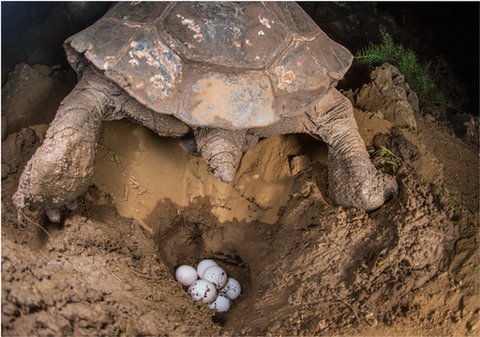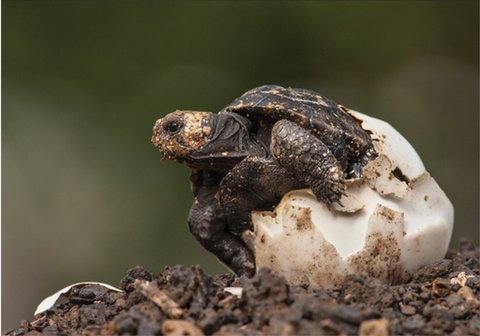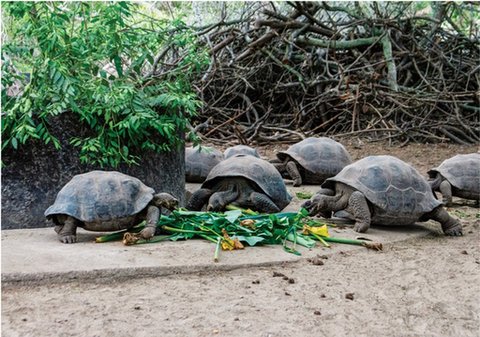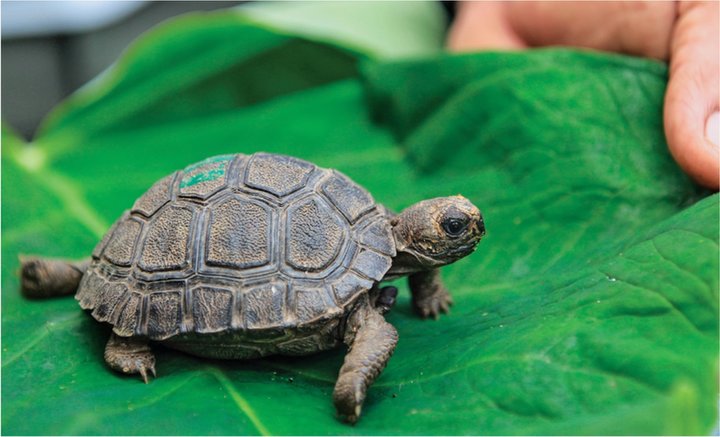Inordertoincreasethenumbersoftortoises,someareraisedincaptivity.Here’showit works:
1
Inthewild,femaletortoiseslaytheireggsinnestholesandcoverthemwithsand.Whenscientistsfindtheburiedeggs,theybringthemtoarearing center.

2
Eacheggislabeled,weighed,andregistered.Theyarekeptindarkboxestosimulatetheirnaturalnests.Theytake120 daysto hatch.

3
Itcantakeuptofivedaysforahatchlingtobreakfreefromitsegg.Hatchlingsfeedontheiryolksacfor30more days.

4
Forabouttwoyears,youngtortoisesarekeptinspecialpensthatprotectthemfrompredators.Theyarefedahealthydietandslowlylearntoforageontheir own.

5
Whentheyarefiveyearsold,orroughlythesizeofadinnerplate,theyareoldenoughtofendforthemselves.Theyarethenreleasedtothe wild.

KeepingthePeace
Anotherconservationgoalistopreventhuman‑tortoiseconflicts.Aspopulationsofbothhumansandgianttortoisesrise,thetwowillcomeingreatercontactwitheachother.Thethreemaininhabitedislands—SantaCruz,SanCristóbal,andIsabela—havealreadyseen conflicts.
OnSantaCruz,forexample,tortoiseshavebeenarrivingattheedgesofthecityofPuertoAyora.Sometortoiseshaveeatenplastics;othershavebeenhitbycars;andatleastonewasattackedbystray dogs.

Ababytortoisecrawlsacrossa leaf.
ThepeopleoftheGalápagosnowknowandvaluethetreasuretheyhaveinthegianttortoises.Theyseethemasimportanttoprotectand preserve.
PROTECTTHENATURALWORLD
OneofNationalGeographic’sgoalsistohelpprotectearth’swildplaces.Afteryouhavefinishedreadingthisissue,haveaclassdiscussion.HowdidthestoriesmakeyoufeelabouttheGalápagosIslands?Doyouthinkitisimportanttoprotect them?